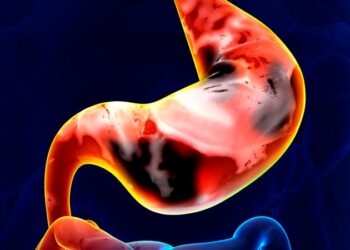TOPLINE:
Low-dose doxycycline showed comparable efficacy with high-dose treatment in patients with lymphocytic scarring alopecia, with a lower rate of adverse events (AEs) and related discontinuations.
METHODOLOGY:
- Researchers conducted a retrospective review of 241 patients (82.6% women; mean age, 58.4 years; 49.8% White; 14.1% Black) diagnosed with lymphocytic scarring alopecia between 2009 and 2023 to address the limited evidence regarding treatment outcomes with low-dose doxycycline in these patients.
- The most common diagnoses were lichen planopilaris (50.2%), frontal fibrosing alopecia (45.6%), and central centrifugal cicatricial alopecia (15.4%).
- Overall, 64 patients (27.4%) received low-dose doxycycline (20 mg twice daily, 40 mg daily, or 50 mg daily), and 175 (72.6%) received high-dose doxycycline (50 mg twice daily, 100 mg daily, or 100 mg twice daily).
- All patients received adjunctive treatment. The most common adjunctive treatments were intralesional corticosteroids (56.4%), topical corticosteroids (46.1%), and 5% topical minoxidil (31.5%).
- Outcomes included inflammation severity, scalp symptoms, hair loss stability, and patient perceptions.
TAKEAWAY:
- There were no significant differences between low- and high-dose groups in improvement in severity of inflammation (P = .21), hair loss stability (P = .39), and number of scalp symptoms (P = .23). Similar findings were seen in the lichen planopilaris/frontal fibrosing alopecia cohort (P = .42, P = .16, and P = .12, respectively).
- Patient-reported outcomes showed no significant differences between dose groups after controlling for adjunctive therapies (P = .99).
- High-dose doxycycline was associated with significantly higher rates of adverse effects compared with low-dose treatment (23.4% vs 12.1%; P = .05), primarily gastrointestinal symptoms (11.4% vs 6.0%) and photosensitivity/rash (6.9% vs 4.6%).
- Doxycycline was reduced or discontinued in 20.4% of high-dose and 9.1% of low-dose patients because of AEs.
IN PRACTICE:
“This study highlights the benefits of low-dose doxycycline for lymphocytic scarring alopecias, showing comparable efficacy and improved tolerability relative to high doses,” the authors wrote. Prospective studies are needed “to further support” the use of low-dose doxycycline for this group of patients, they added.
SOURCE:
The study was led by Carli Needle, BA, and Anna Brinks, BA, NYU Grossman School of Medicine, New York City, and was published online on March 18 in the Journal of the American Academy of Dermatology.
LIMITATIONS:
The study limitations included discrepancy in dose group sizes, lack of racial diversity, variance in exam documentation, high frequency of adjunctive treatments, and the small number of patients with central centrifugal alopecia. Contributions of concurrent therapies to outcomes were not analyzed.
DISCLOSURES:
The study did not receive any funding. The authors reported no competing interests.
This article was created using several editorial tools, including AI, as part of the process. Human editors reviewed this content before publication.
Source link : https://www.medscape.com/viewarticle/low-dose-doxycycline-controls-scarring-alopecia-fewer-side-2025a10007gz?src=rss
Author :
Publish date : 2025-03-28 11:40:00
Copyright for syndicated content belongs to the linked Source.














